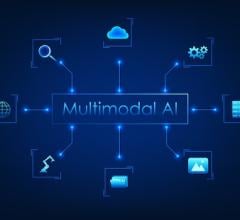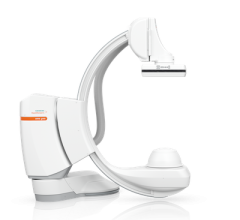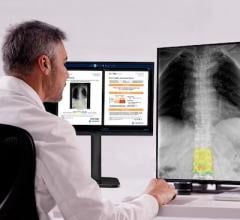
March 2, 2022 — Gleamer, a French medtech company pioneering the use of artificial intelligence technology in the practice of radiology, announced today that the United States Food and Drug Administration has cleared its BoneView AI software for use by U.S. healthcare specialists to aid in diagnosing fractures and traumatic injuries on X-rays. In a U.S. study recently published by Boston University School of Medicine, BoneView was shown to help detect and localize fractures over the entire appendicular skeleton, rib cage, thoracic and lumbar spine, improving sensitivity and specificity, while reducing reading time. BoneView received the CE mark class 2a certification in the European Union in March 2020 and has been widely adopted in more than 300 institutions across 13 countries.
Gleamer developed BoneView to aid radiologists, orthopedic surgeons, emergency physicians, rheumatologists, family physicians and physician assistants, all of whom read X-rays in clinical practice to diagnose fractures in their patients. BoneView detects fractures in X-ray images and submits them to radiologists for final validation, providing healthcare professionals with a safe, reliable, time-saving and user-friendly tool. The BoneView AI algorithm is cleared as a CADe/CADx (computer assisted detection and diagnosis) by the FDA and highlights regions of interest with bounding boxes around areas where fractures are suspected so radiologists can prioritize reading those X-rays.
The Study conducted between July 2020 and January 2021, used images acquired in the US from multiple centers on instruments from a wide variety of manufacturers and involved readers from Boston University School of Medicine (MA), Stony Brook University Renaissance School of Medicine (NY), and Massachusetts General Hospital - Harvard Medical School (MA). Results showed that BoneView AI assistance provided a 10.4 percent improvement of fracture detection sensitivity and shortened the radiograph reading time by 6.3 seconds per patient. The BoneView AI algorithm’s standalone performance for fracture detection had an AUC of .97.
Across the six types of specialists participating in the Study, the combination of AI and health professionals’ interpretations lowered the false negative rate (undetected fractures) on X-rays by 29 percent, while reducing reading time by 15 percent on exams specifically selected for their difficulty. BoneView also improved the specificity of fracture detection by radiologists and non-radiologists involving many anatomical locations, including foot/ankle, knee/leg, hip/pelvis, hand/wrist, elbow/arm, shoulder/clavicle, rib cage and thoracolumbar spine.
"BoneView can change everything about the way X-ray reading is done today," said Christian Allouche, CEO and co-founder of Gleamer. "In the value-based U.S. health care system, providers tell us they want to improve the radiographic diagnostic process which accounts for a huge part of their workload and optimize patient management. We are delighted and proud to offer clinicians and patients BoneView AI for this state-of-the-art advancement in radiology and patient care."
Traumatic skeletal injuries are a leading source of consultation in emergency departments, representing one-third of annual visits. Fracture interpretation errors can represent up to 24 percent of harmful diagnostic errors seen in the ER and are more common during the evening and overnight hours, most likely related to non-expert reading and fatigue.
“Radiologists’ workload has doubled in the past two decades, and despite technological progress, they must analyze hundreds more images every day, requiring the readings to be highly reliable,” explained Ali Guermazi, MD, PhD, Chief of Radiology at VA Boston Healthcare System and Professor of Radiology and medicine at Boston University School of Medicine, and leader of the U.S. study. “The assistance of AI should allow us to improve the specificity of the complementary exams prescribed after the radiography, to avoid delays in care, and to direct patients into the right therapeutic pathway. Our study was focused on fracture diagnosis, and a similar concept can be applied to other diseases and disorders.”
To date, BoneView has analyzed more than three million images around the world and is deployed in more than 13 countries across Europe, the Middle East, Asia-Pacific and North America. More than 3,500 radiologists and emergency physicians now rely on BoneView in their clinical routines. The solution is now available in the U.S. directly via GLEAMER and through other platforms including Fujifilm, Aidoc, Ferrum Health, Blackford Analysis.
For more information: www.gleamer.ai


 December 09, 2025
December 09, 2025 









